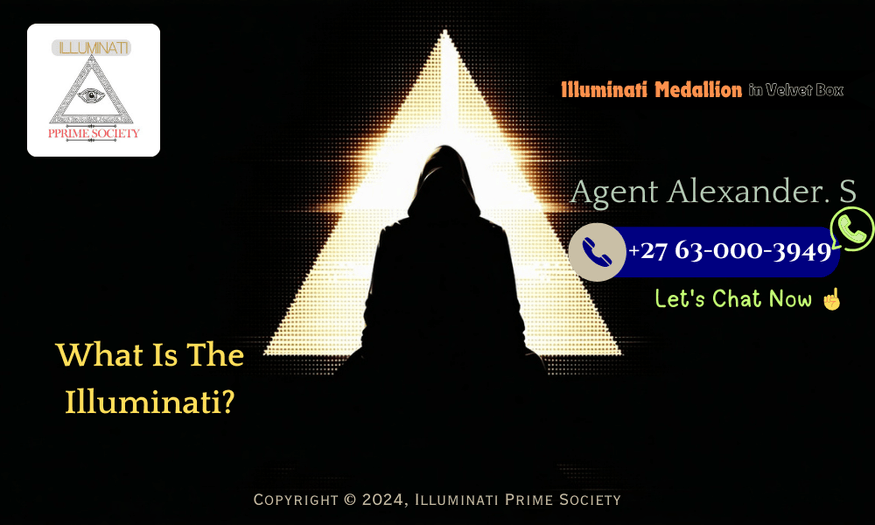Unveiling the Mysteries: Discover the Symbolic Items Used in Illuminati Initiation Ceremonies The...
Unveiling the Illuminati: History, Myths, and Modern-Day Theories

Unravel the mysteries and truths behind one of the most secretive and controversial organizations in history.
The Origins of the Illuminati
The Illuminati, often shrouded in mystery, traces its origins back to the late 18th century. Founded on May 1, 1776, in Ingolstadt, Bavaria, by Adam Weishaupt, the organization was initially known as the Bavarian Illuminati. Weishaupt, a professor of canon law, sought to promote Enlightenment ideals such as reason, secularism, and freedom of thought, challenging the religious and political norms of the time.
The Illuminati aimed to influence political decisions and societal structures through a network of influential members. Its hierarchical structure and secretive nature led to widespread suspicion and eventual suppression by Bavarian authorities in 1785. Despite its official dissolution, the legend of the Illuminati persisted, evolving into a symbol of conspiracy and hidden power.
Famous Conspiracy Theories
The allure of the Illuminati has spawned numerous conspiracy theories over the centuries. One of the most pervasive beliefs is that the Illuminati controls world events from behind the scenes, manipulating governments, economies, and media to maintain global dominance. This theory often includes claims that the Illuminati orchestrated significant historical events, such as the French Revolution, the assassination of JFK, and the moon landing hoax.
Another popular theory suggests that prominent public figures, including celebrities, politicians, and business leaders, are members of the Illuminati, working to propagate its agenda. Symbols such as the all-seeing eye, pyramids, and the number 666 are often cited as evidence of the Illuminati's influence in popular culture and major institutions.
Modern-Day Illuminati: Fact or Fiction?
The question of whether the Illuminati exists in the modern era is a subject of intense debate. Some argue that the organization has evolved and continues to operate covertly, leveraging advanced technology and global networks to exert influence. Proponents of this view point to the prevalence of Illuminati symbols in media and the concentration of power among a select few as indicators of the group's ongoing activities.
Skeptics, however, dismiss these claims as unfounded and born out of a tendency to find patterns in random events. They argue that the original Illuminati was effectively dismantled in the late 18th century and that modern references are merely the product of myth and speculation. Despite the lack of concrete evidence, the idea of a powerful, secret society continues to captivate the public imagination.
Influence on Pop Culture
The concept of the Illuminati has profoundly impacted pop culture, with numerous references appearing in literature, music, movies, and television. Dan Brown's bestselling novel 'Angels & Demons' and its subsequent film adaptation brought the Illuminati into the mainstream, presenting a narrative of hidden knowledge and clandestine power. Similarly, hip-hop artists like Jay-Z and Kanye West have been linked to the Illuminati through their music and public personas, often incorporating symbols associated with the group.
Television shows and movies frequently explore Illuminati themes, ranging from secret societies plotting world domination to individuals uncovering hidden truths. This fascination with the Illuminati's supposed influence reflects a broader cultural interest in conspiracy theories and the search for hidden meanings in everyday life.
Debunking Myths and Misconceptions
While the mythos of the Illuminati is rich and compelling, it is essential to separate fact from fiction. Many of the conspiracy theories surrounding the Illuminati lack credible evidence and are fueled by a mix of paranoia and the human tendency to seek out explanations for complex events. Historical records confirm that the Bavarian Illuminati was a short-lived organization with limited influence, far from the omnipotent force described in popular lore.
Moreover, the symbols often associated with the Illuminati, such as the all-seeing eye, have origins predating the organization and are used in various cultural and religious contexts. Understanding these symbols' historical and cultural significance can help demystify the Illuminati and reduce the spread of misinformation. By critically examining the evidence and considering alternative explanations, we can better appreciate the true nature of the Illuminati and its place in history.
.png?width=100&height=100&name=Illuminati%20Prime%20Society%20Logo%20(1).png)


